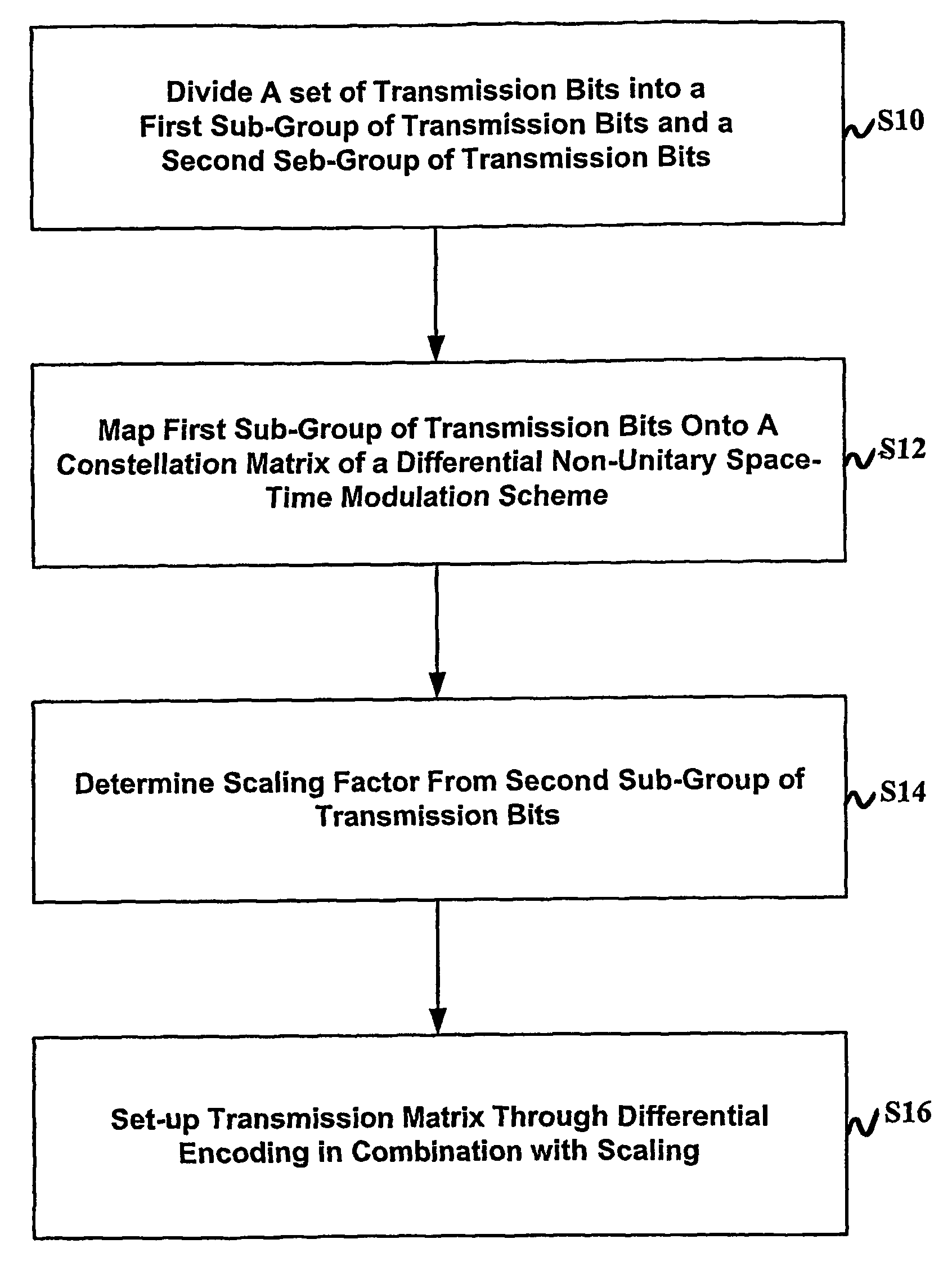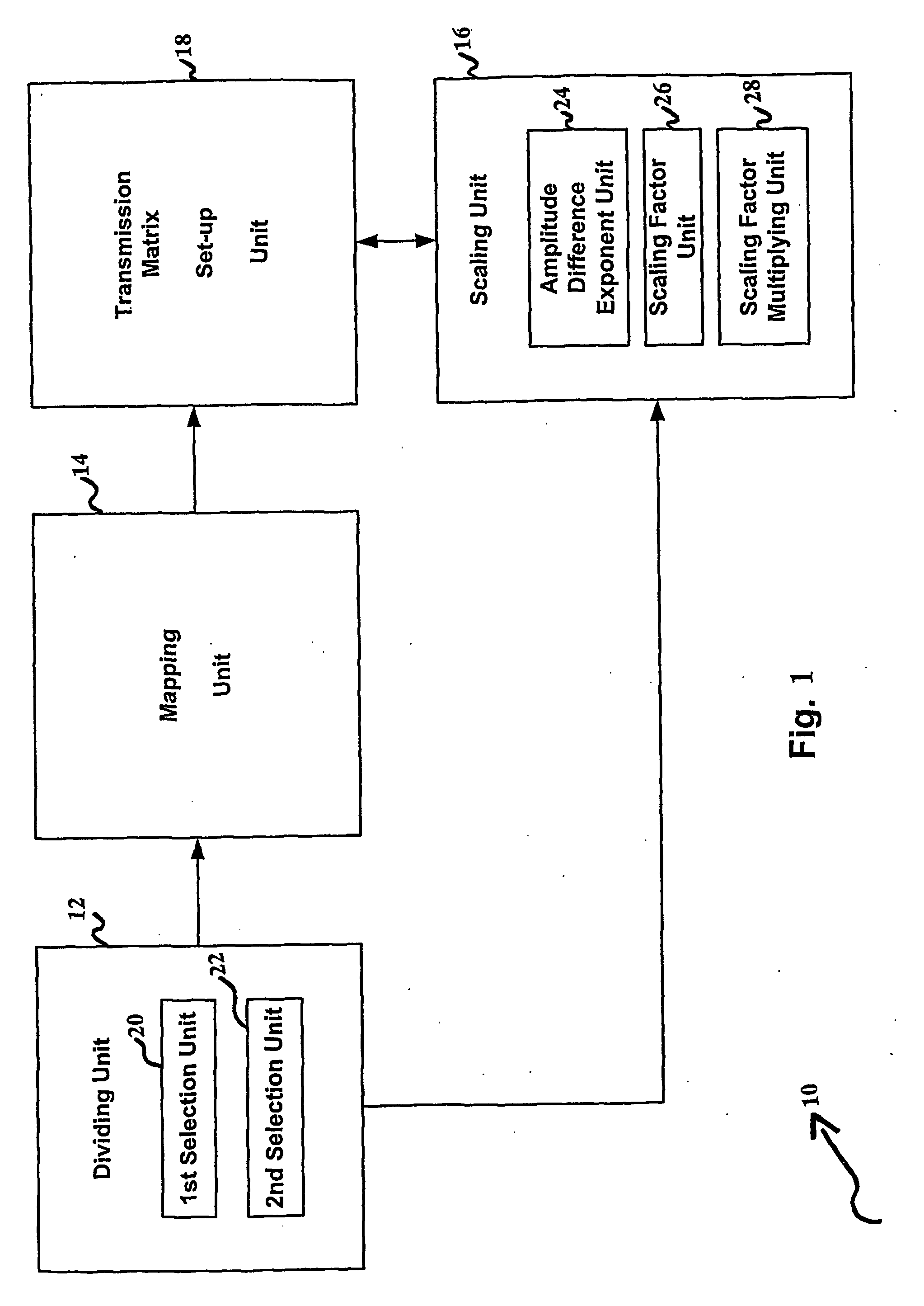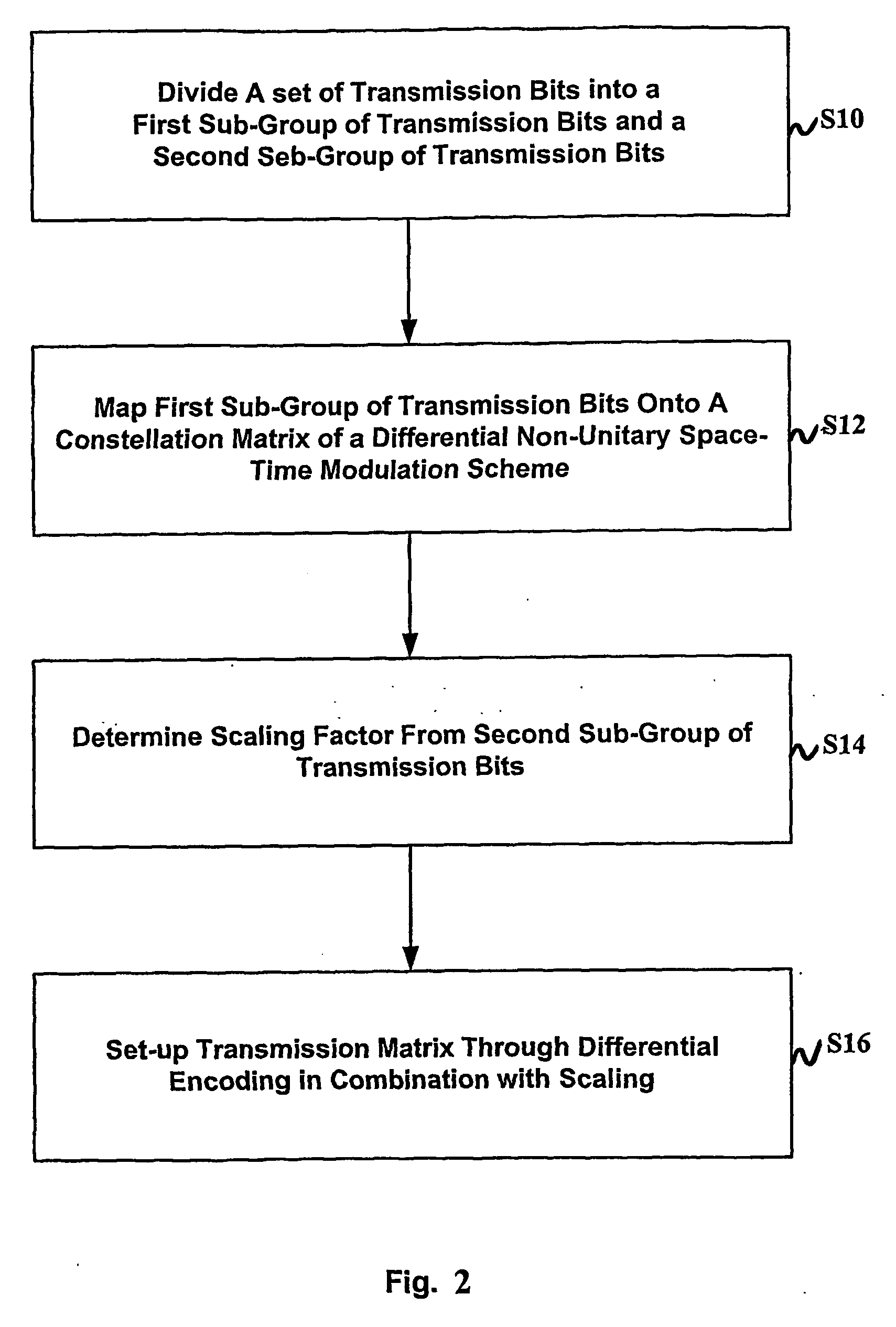Differential multiple-norm transmit diversity with forward error correction and related diversity reception
a technology of forward error correction and transmit diversity, applied in the field of differential multiplenorm transmit diversity with forward error correction and related diversity reception, can solve the problem of channel estimation being a more severe problem in multiple-input multiple-output mimo systems than, and achieve the effect of reducing the number of comparisons with possible transmission matrices at the receiver side, improving performance, and low detection complexity
- Summary
- Abstract
- Description
- Claims
- Application Information
AI Technical Summary
Benefits of technology
Problems solved by technology
Method used
Image
Examples
Embodiment Construction
[0046] In the following, the best mode and preferred embodiments of the present invention will be explained with reference to the drawing. Initially, some basic concepts underlying differential multiple-length transmit diversity and related diversity reception will be explained for a better understanding of the present invention.
Channel Model
[0047] According to the present invention there is considered a fiat fading multiple-input multiple-output MIMO channel with ηT transmit and ηR receive antennas. The channel coefficients are arranged in a matrix Hk=[hk(11)⋯hk(nT1)⋮⋰⋮hk(1nR)⋯hk(nTnR)],(1)
where hk(ij) is the channel coefficient from transmit antenna i to receive antenna j at time k.
[0048] Further, in frequency-selective environments the flat fading channel can, e.g., be accomplished by orthogonal frequency division multiplexing OFDM with a sufficiently large guard interval. In code divisional multiple access CDMA, the signals in each finger of a Rake receiver faces a flat c...
PUM
 Login to View More
Login to View More Abstract
Description
Claims
Application Information
 Login to View More
Login to View More - R&D
- Intellectual Property
- Life Sciences
- Materials
- Tech Scout
- Unparalleled Data Quality
- Higher Quality Content
- 60% Fewer Hallucinations
Browse by: Latest US Patents, China's latest patents, Technical Efficacy Thesaurus, Application Domain, Technology Topic, Popular Technical Reports.
© 2025 PatSnap. All rights reserved.Legal|Privacy policy|Modern Slavery Act Transparency Statement|Sitemap|About US| Contact US: help@patsnap.com



